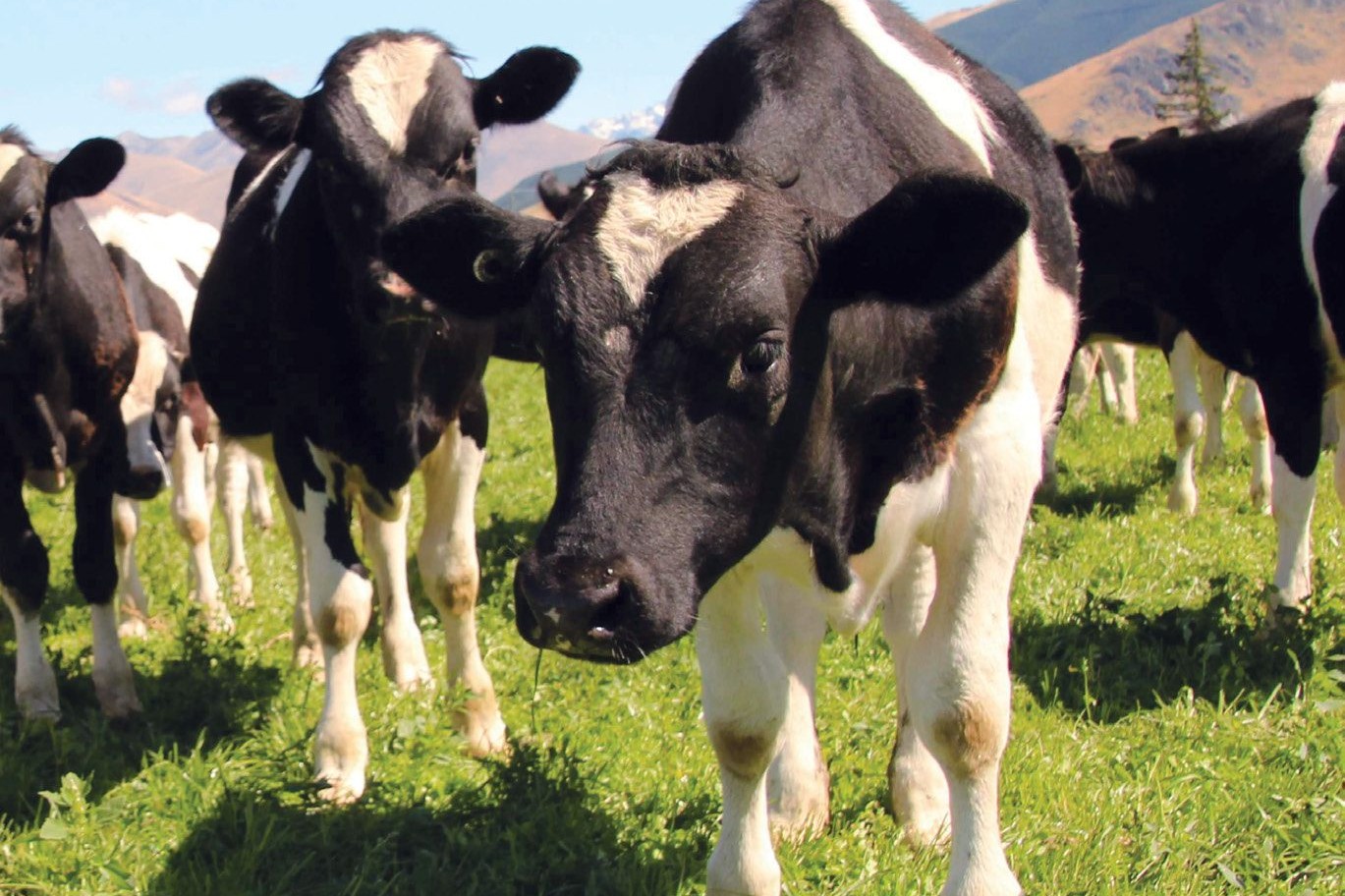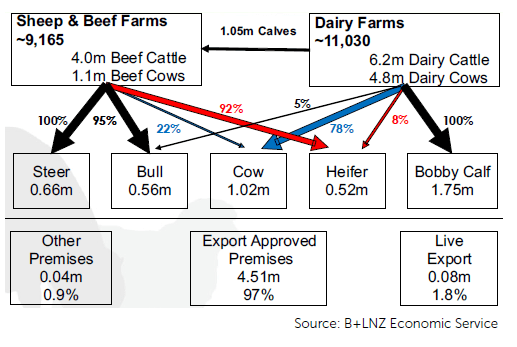What is a dairy-beef calf worth?
Whatever farmers' thoughts on carbon and forestry, they will inevitably need to get to grips with dairy-beef, Bob Thompson writes.

Whatever farmers’ thoughts on carbon and forestry, they will inevitably need to get to grips with dairy-beef, Bob Thompson writes.
There’s been a lot of discussion and conjecture in farming communities over the reduced number of dairy-beef calves that have been reared for finishing. On the flip side our traditional breeding cow herd is seemingly hanging in with about one-million head contributing. But our beloved breeding cows are under threat as a big chunk of their hill country homeland has been sold off to carbon and pine trees.
The latest numbers of beef cattle contributing to markets in Figure A tells at least part of the story.
And if we break down these numbers we can estimate where the dairy-beef finishing cattle originate (Table 1).
Based on the 2021-22 B+LNZ numbers there were an estimated 660,000 steers killed in total of which 190,000 or 29% are estimated to be dairy-beef. For heifers the story is different with 520,000 heifers killed of which 290,000 or 56% estimated to be dairy beef. Of course, with the heifer kill, the cull dairy heifers are included in the dairy-beef numbers.
About 59% of the prime kill is made up from traditional cattle but that will change as the number of breeding cows reduces and the number of dairy-beef increases to fill the gap.

With B+LNZ recently estimating that more than 50,000 hectares of hill country being expected to be planted in pine trees from the most recent land sales, our traditional beef cow numbers will drop. The numbers indicate that from about one million breeding cows, 700,000 traditional steers and heifers are killed each year. Clearly as breeding cow numbers go down so will the number of traditional steers and heifers available for finishing. To back-up the facts on loss of land to new forestry, the Ministry for Primary Industries recently reported 19,000ha were forecasted to be planted in 2020, and 34,000ha provisionally to be planted in 2021. Farmers don’t need to read about this as they have the evidence from their own rural community any day they drive up and down their local roads.
Many of us have very strong views on how bad indiscriminate planting of pine trees is for our land is all aspects of sustainable development. I have pointed out that if and when we’re required to rear our 2 million plus bobby calves, we will now have to reduce the number of dairy cows because there will not be the land available to finish these calves.
Whatever your thoughts and views on carbon and forestry, we will inevitably need to get to grips with dairy-beef.
Many will claim that dairy-beef will be the ruination of our prime beef markets when in fact the science and commercial kill data tell a different story. Both the SFF EQ and the Alliance Hand-Picked programmes have not been able to report any breed differences in average strike rates and that is backed up with solid NZ research. But not all dairy-beef is the same, and in the same way not all traditional beef is the same – averages are dangerous. Ask the man with one foot in a bucket of boiling water and one foot in a bucket of ice why the water is not warm on average! In much the same way we have these sorts of differences in our everyday farming.

In previous articles I have been at pains to point out that not all dairy-beef is the same. From buying dairy-beef weaners based on their dairy dam and their beef sire, we learnt the following. A 100kg Friesian bull calf was bought for $500 and finished. A 100kg dairy-beef steer calf out of a Kiwi cow and an average genetic merit beef bull, was worth only $140 to make the same margin(a hectare) as the Friesian from finishing. That steer purchase price could increase to $218/head if the calf was sired by a high genetic merit beef bull. We pay more for steers than bulls of the same weaning weight which can be put down to the cost of convenience.
In much the same way we can calculate the value of dairy-beef calves for finishing cattle when sired by average beef bulls or high genetic merit beef bulls. That work, which was based on hardcore data from the Dairy Beef Progeny Test, showed us that we’d make $200/ha more when we chose to buy dairy-beef calves from high genetic merit beef sires.
- Bob Thomson is a farm consultant for AgFirst.




